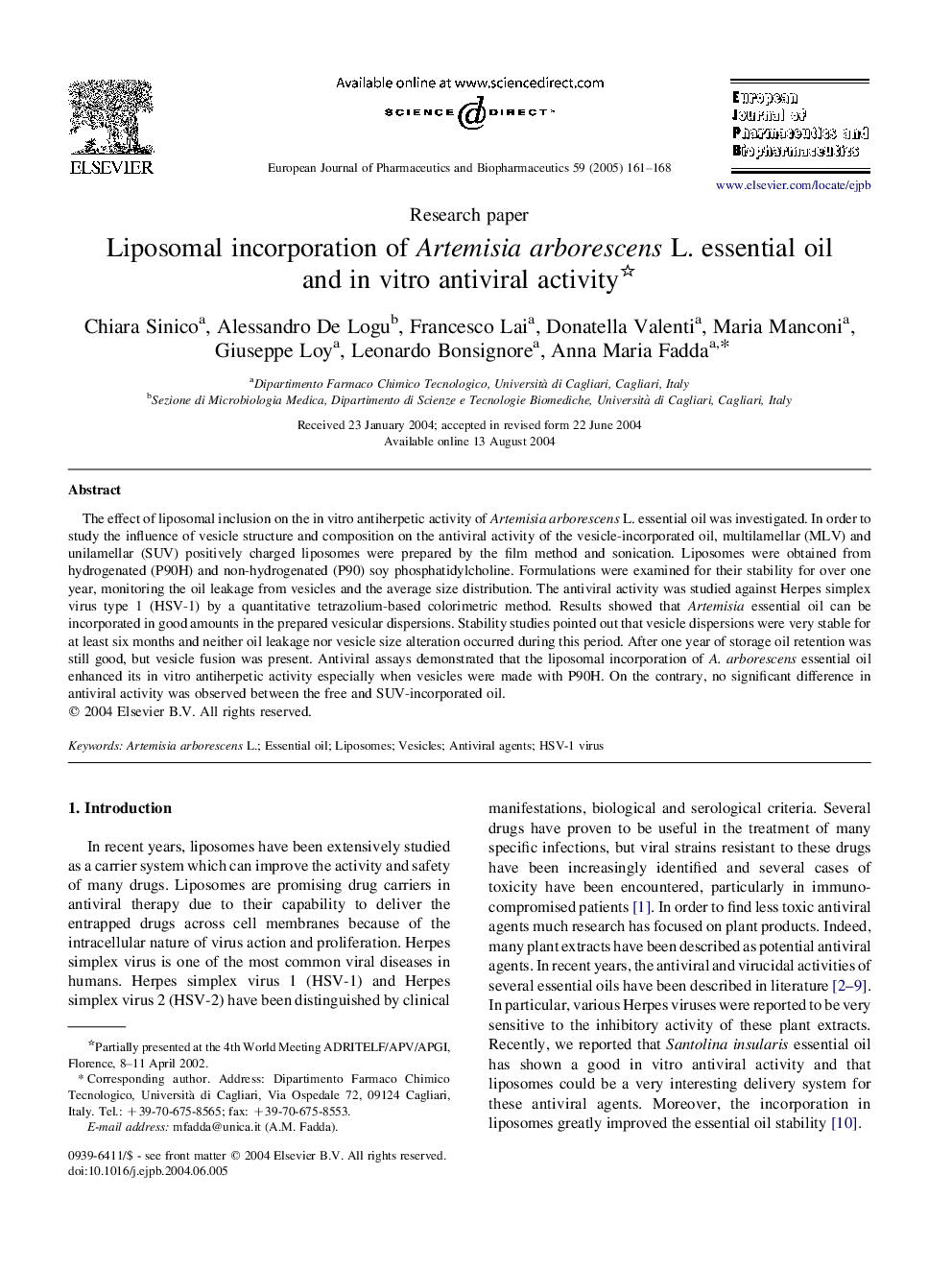| Article ID | Journal | Published Year | Pages | File Type |
|---|---|---|---|---|
| 9901567 | European Journal of Pharmaceutics and Biopharmaceutics | 2005 | 8 Pages |
Abstract
The effect of liposomal inclusion on the in vitro antiherpetic activity of Artemisia arborescens L. essential oil was investigated. In order to study the influence of vesicle structure and composition on the antiviral activity of the vesicle-incorporated oil, multilamellar (MLV) and unilamellar (SUV) positively charged liposomes were prepared by the film method and sonication. Liposomes were obtained from hydrogenated (P90H) and non-hydrogenated (P90) soy phosphatidylcholine. Formulations were examined for their stability for over one year, monitoring the oil leakage from vesicles and the average size distribution. The antiviral activity was studied against Herpes simplex virus type 1 (HSV-1) by a quantitative tetrazolium-based colorimetric method. Results showed that Artemisia essential oil can be incorporated in good amounts in the prepared vesicular dispersions. Stability studies pointed out that vesicle dispersions were very stable for at least six months and neither oil leakage nor vesicle size alteration occurred during this period. After one year of storage oil retention was still good, but vesicle fusion was present. Antiviral assays demonstrated that the liposomal incorporation of A. arborescens essential oil enhanced its in vitro antiherpetic activity especially when vesicles were made with P90H. On the contrary, no significant difference in antiviral activity was observed between the free and SUV-incorporated oil.
Related Topics
Life Sciences
Biochemistry, Genetics and Molecular Biology
Biotechnology
Authors
Chiara Sinico, Alessandro De Logu, Francesco Lai, Donatella Valenti, Maria Manconi, Giuseppe Loy, Leonardo Bonsignore, Anna Maria Fadda,
